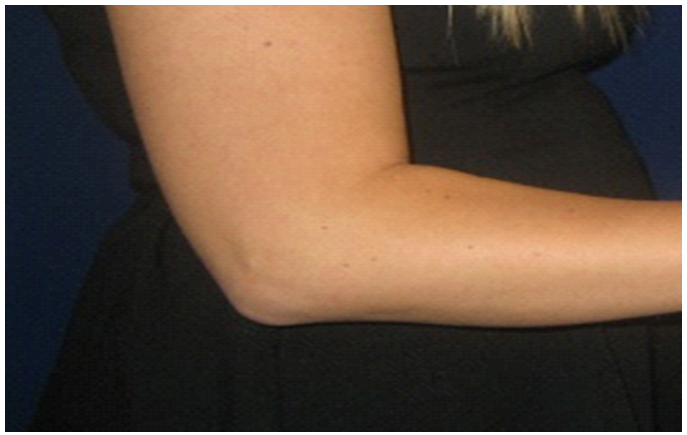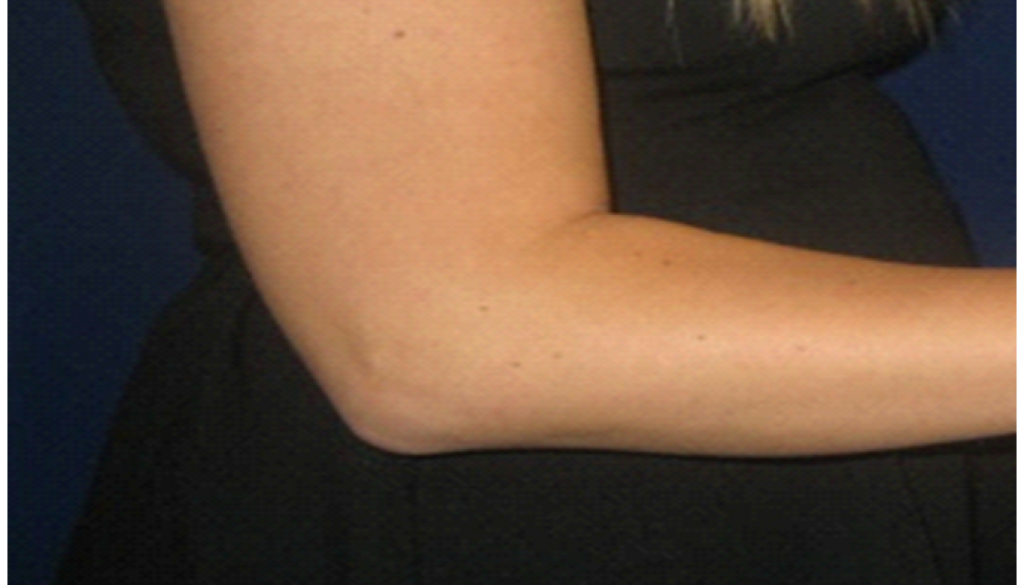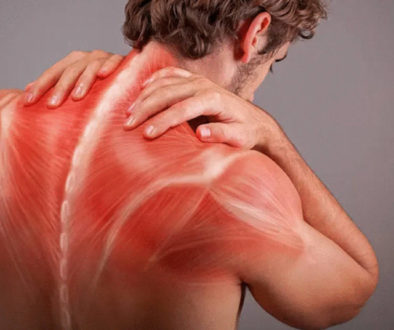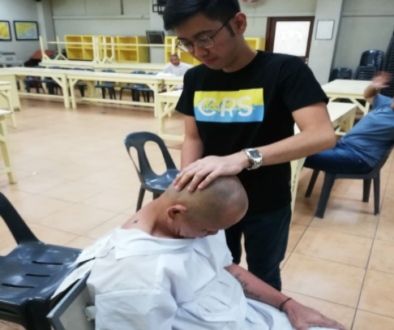TENNIS ELBOW OR LATERAL EPICONDYLITIS OR LATERAL EPICONYDLALGIA: What’s in a name?
Lateral epicondylalgia (LE) is a soft tissue injury manifesting as pain on the lateral aspect of the elbow. It is reported to be the most common cause of lateral elbow pain (Kotnis et al., 2012, Faro and Wolf, 2007). Lateral epicondylalgia is reported to be the most common diagnosis associated with pain in the lateral elbow (Kotnis et al., 2012). Based on the literature review of Shiri and Viikari-Juntura (2011), the prevalence of LE ranges from 1-1.3% in men and from 1.1-4.0% in women in the general population, and it varies between 0.3% and 13.5% in working populations. There is no apparent gender bias, except for the studies of Shiri et al. (2006) and Leclerc et al. (2001), where women had a higher prevalence of LE.
As shown in Figure 1, the forearm extensor muscles, Radial Nerve (RN), bones in the elbow, distal biceps tendon and lateral collateral ligament are possible sources of lateral elbow pain in LE. Among the forearm extensor muscles, the Extensor Carpi Radialis Brevis (ECRB) and Extensor Digitorum Communis (EDC) are frequently cited as causes of pain in LE followed by RN, and the lateral epicondyle. In Figure 1, the size of the circles approximates the frequency in which the structures were observed by a number of authors to contribute to the pathology of LE. The area formed by the overlapping circles indicates common anatomical structures found to underpin LE in the studies indicated by numbers.







Figure 1. Anatomical structures suspected to be involved in LE. Numbers indicate references, listed below.
Key: Anc, anconeus; Br, Brachioradialis; Capit, capitellum; DBT, distal biceps tendon; ECRB, Extensor Carpi Radialis Brevis; ECRL, Extensor Carpi Radialis Longus; EDC, Extensor Digitorum Communis; LCL, lateral collateral ligament; LE, Lateral epicondylalgia; Sup, supinators Reference numbers: 1, Albrecht et al., 1997; 2, Almquist et al., 1998; 3, Bredella et al., 1999; 4, Briggs and Elliott, 1985; 5, Bunata et al., 2007; 6, Coel et al., 1993; 7, De Smet et al., 1999; 8, Erak et al., 2004; 9, Fairbank and Corlett, 2002; 10, Kaplan, 1959; 11, Muehlberger et al., 2009; 12, Oskarsson et al., 2007; 13, Roles and Maudsley, 1972; 14, Tomaino and Towers, 2004; 15, Van der Wal, 2009; 16. Wilhelm, 1996; 17, Yaxley and Jull, 1993.
The controversy regarding lateral elbow pain pathology is reflected in the various names given to this condition. The term ‘tennis elbow’ was the earliest description of this condition, drawn from Morris’ description of “lawn tennis arm” in the Lancet in 1882 (Thurston, 1998). This condition was generally called ‘tennis elbow’ until the 1990s. Research since then has proposed other names for the condition, based on different notions of the underlying pathology, such as Lateral epicondylalgia (Waugh, 2005), lateral epicondylitis (Boyer and Hastings, 1999), lateral elbow tendinosis (Stasinopoulos and Johnson, 2006), lateral elbow enthesopathy (Jaen-Diaz et al., 2010, Kamien, 1990), or lateral elbow epicondylopathy (Muehlberger et al., 2009).
Although 50% of tennis players may expect to suffer elbow pain at some time during their playing life (Kamien, 1990), the condition can also result from a variety of activities, such as hammering, gardening and secretarial work (Geoffroy et al., 1994, Stasinopoulos and Johnson, 2006). This makes the name ‘tennis elbow’ a misnomer (Stasinopoulos and Johnson, 2006).
In the current literature, the most commonly-used term for this condition is lateral epicondylitis. Like the term ‘Lateral epicondylalgia’, ‘lateral epicondylitis’ denotes the location of the elbow symptoms and its probable cause (Stasinopoulos and Johnson, 2006). Several authors have proposed however, that lateral epicondylitis is a misnomer for the condition (Coonrad and Hooper, 1973, Nirschl and Ashman, 2003, Nirschl and Pettrone, 1979, Regan et al., 1992) because the ‘itis’ suffix infers that pain is caused by inflammation. The small number of inflammatory mediators, such as macrophages, lymphocytes and neutrophils found in the common extensor tendon (CET) (Nirschl and Ashman, 2003, Nirschl and Pettrone, 1979, Regan et al., 1992) challenge the inflammatory nature of this condition.
Non-inflammatory markers, on the other hand, have been reported in the CET when the lateral elbow is painful. Dense population of fibroblasts, presence of vascular hyperplasia and disorganised collagen were reported by Nirschl and Pettrone (1979) in a case study of 88 painful lateral elbows. Nirschl and Pettrone (1979) found fibroblasts and vascular granulation in the ECRB tendon using light microscopy. Coonrad and Hopper (1973) noted round-cell infiltration, scattered foci of fine calcification and scar tissue with marginal areas of cystic degeneration in painful lateral elbows of 28 patients. The presence of these non-inflammatory markers indicates failure of tendons to heal properly after repetitive injury (Nirschl and Pettrone, 1979). To emphasise the degenerative non-inflammatory process in the CET, the name ‘lateral elbow tendinosis’ was suggested over a decade ago (Kraushaar and Nirschl, 1999).
Jaen-Diaz et al. (2010) and Kamien (1990) suggested that the basis for naming this clinical condition should be the structures involved and related pathology. They noted that ‘lateral elbow enthesopathy’ and ‘lateral elbow epicondylopathy’ could be used to highlight the notion that the predominant lesion is at the insertion of the extensor tendon on the lateral epicondyle. This nomenclature, however, unjustifiably limits the location of pathology on the CET. The proposed names also excluded the possible involvement of other anatomical structures, such as the Radial Nerve (Roles and Maudsley, 1972), distal biceps tendon (Tomaino and Towers, 2004), lateral collateral ligament (Bredella et al., 1999) or the cervical spine (Fernandez-Carnero et al., 2008) as potential causes for pain on the lateral elbow.
Lateral Epicondylalgia instead of Lateral Epicondylitis
There are a number of ways in which lateral elbow pain are described in the literature. These names relate to causality, possible pathology and structures. The name ‘Lateral epicondylalgia’ is most appropriate to denote clinical conditions which manifest with pain on the lateral aspect of the elbow, regardless of its pathology (inflammatory or non-inflammatory).
Common Treatments Includes:
Forearm bracing or splints or taping, adjusting handgrip size, and extracorporeal shockwave therapy were among the popular non-invasive physical therapy treatments which aimed to alleviate pain in the elbow by decreasing stress on the CEO (Bisset et al., 2005, Clements and Chow, 1993, Gerdesmeyer et al., 2003, Grimmer-Somers et al., 2009, Hatch et al., 2006, Nirschl, 1988, Wuori et al., 1998).
We have evidenced based results that our BioMechanical Taping Technique or BMT works well with Tennis Elbow. To learn more about BMT visit our website at www.gopainfreenow.com




